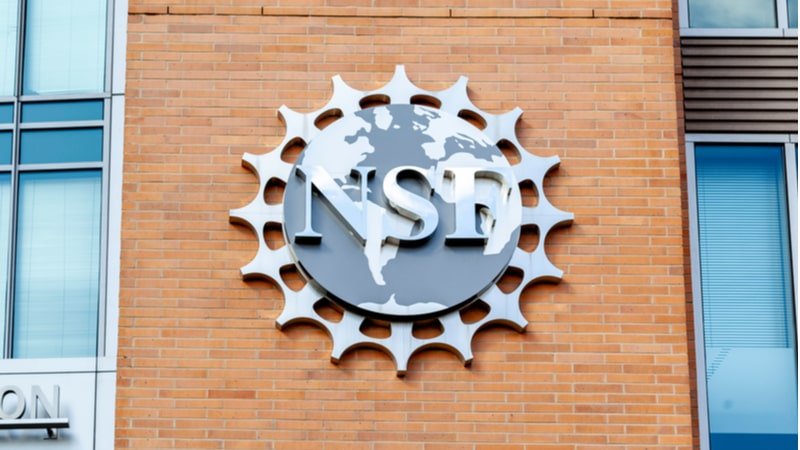AI Research
Calibrating digital twins at scale

In recent years, machine learning has enabled tremendous advances in urban planning and traffic management. However, as transportation systems become increasingly complex, due to factors like increased traveler and vehicle connectivity and the evolution of new services (e.g., ride-sharing, car-sharing, on-demand transit), finding solutions continues to be difficult. To better understand these challenges, cities are developing high-resolution urban mobility simulators, called “digital twins”, that can provide detailed descriptions of congestion patterns. These systems incorporate a variety of factors that might influence traffic flow, such as available mobility services, including on-demand rider-to-vehicle matching for ride-sharing services; network supply operations, such as traffic-responsive tolling or signal control; and sets of diverse traveler behaviors that govern driving style (e.g., risk-averse vs. aggressive), route preferences, and travel mode choices.
These simulators tackle a variety of use cases, such as the deployment of electric-vehicle charging stations, post-event traffic mitigation, congestion pricing and tolling, sustainable traffic signal control, and public transportation expansions. However, it remains a challenge to estimate the inputs of these simulators, such as spatial and temporal distribution of travel demand, road attributes (e.g., number of lanes and geometry), prevailing traffic signal timings, etc., so that they can reliably replicate prevailing traffic patterns of congested, metropolitan-scale networks. The process of estimating these inputs is known as calibration.
The main goal of simulation calibration is to bridge the gap between simulated and observed traffic data. In other words, a well-calibrated simulator yields simulated congestion patterns that accurately reflect those observed in the field. Demand calibration (i.e., determining the demand for or popularity of a particular origin-to-destination trip) is the most important input to estimate, but also the most difficult. Traditionally, simulators have been calibrated using traffic sensors installed under the roadway. These sensors are present in most cities but costly to install and maintain. Also, their spatial sparsity limits the calibration quality because congestion patterns go largely unobserved. Moreover, most of the demand calibration work is based on single, typically small, road networks (e.g., an arterial).
In “Traffic Simulations: Multi-City Calibration of Metropolitan Highway Networks”, we showcase the ability to calibrate demand for the full metropolitan highway networks of six cities — Seattle, Denver, Philadelphia, Boston, Orlando, and Salt Lake City — for all congestion levels, from free-flowing to highly congested. To calibrate, we use non-sparse traffic data, namely aggregated and anonymized path travel times, yielding more accurate and reliable models. When compared to a standard benchmark, the proposed approach is able to replicate historical travel time data 44% better on average (and as much as 80% better in some cases).
AI Research
NSF Plans New AI Research Operations Hub – MeriTalk

The National Science Foundation (NSF) said on Wednesday that it is looking to open a National Artificial Intelligence Research Resource Operations Center (NAIRR-OC) to arm the nation’s researchers and educators with critical AI tools and resources.
In a solicitation, NSF said that it is aiming to build on its National AI Research Resource (NAIRR) pilot by building sustained operational capabilities for NAIRR and broadening access to AI resources for the research community, which largely lacks the tools and resources “to investigate fundamental AI questions and train students.”
NAIRR was launched in January 2024 and serves as a shared national infrastructure to support the AI research community and power responsible AI use.
“The NAIRR Operating Center solicitation marks a key step in the transition from the NAIRR Pilot to building a sustainable and scalable NAIRR program,” said Katie Antypas, director of the NSF Office of Advanced Cyberinfrastructure.
“We look forward to continued collaboration with private sector and agency partners, whose contributions have been critical in demonstrating the innovation and scientific impact that comes when critical AI resources are made accessible to research and education communities across the country,” continued Antypas.
Specifically, NSF’s solicitation asks for proposals to create a community-based center to oversee “the development of the overarching framework, operations strategy and management structure needed to support the NAIRR’s scaling and growth.”
That includes integrating advanced computing and data resources, a centralized web portal with access to tools, and collaborating with partner organizations, while conducting outreach and engagement with the national AI research community.
NSF said that the NAIRR-OC will directly carry out priorities in the Trump administration’s AI Action Plan, released in July, which said that the federal government should “build the foundations for a lean and sustainable NAIRR operations capability that can connect an increasing number of researchers and educators across the country to critical AI resources.”
Since NAIRR’s launch, it has connected 400 research teams with computing platforms, datasets, software, and models, and is partnering with 28 industry members and supported by 14 federal agencies, according to NSF.
AI Research
Harnessing AI to unlock the power of data for business success

AI Research
Greek humanoid Olympiad reveals robots are far behind artificial intelligence — OODAloop

Greece recently witnessed the world’s first International Humanoid Olympiad in Olympia, where humanoid robots played boxing and soccer matches to attain glory. The event, held from August 29 to September 2, was organized by Acumino and Endeavor, who invited industry leaders to line up as speakers, apart from the smart machines displaying their abilities. While humanoid robots have increasingly gained popularity for mirroring human actions, we have yet to see them involved in routine household chores like washing dishes and tidying closets. AI has advanced explosively in the past year through applications like ChatGPT, but the same cannot be said about its physical cousins – the humanoid robots. Humanoid robots are miles behind in learning from data compared to AI software and tools. Minas Liarokapis, a Greek academic and startup founder who organized the Olympiad, made a rather bold prediction regarding humanoids becoming a helping hand in the kitchens and other household chores. “I really believe that humanoids will first go to space and then to houses … the house is the final frontier,” she told the Associated Press (AP) on Tuesday.
Full report : Humanoid robots lack data to keep pace with explosive rise of AI.
-

 Business5 days ago
Business5 days agoThe Guardian view on Trump and the Fed: independence is no substitute for accountability | Editorial
-
Tools & Platforms3 weeks ago
Building Trust in Military AI Starts with Opening the Black Box – War on the Rocks
-

 Ethics & Policy1 month ago
Ethics & Policy1 month agoSDAIA Supports Saudi Arabia’s Leadership in Shaping Global AI Ethics, Policy, and Research – وكالة الأنباء السعودية
-

 Events & Conferences4 months ago
Events & Conferences4 months agoJourney to 1000 models: Scaling Instagram’s recommendation system
-

 Jobs & Careers2 months ago
Jobs & Careers2 months agoMumbai-based Perplexity Alternative Has 60k+ Users Without Funding
-

 Education2 months ago
Education2 months agoVEX Robotics launches AI-powered classroom robotics system
-

 Funding & Business2 months ago
Funding & Business2 months agoKayak and Expedia race to build AI travel agents that turn social posts into itineraries
-

 Podcasts & Talks2 months ago
Podcasts & Talks2 months agoHappy 4th of July! 🎆 Made with Veo 3 in Gemini
-

 Podcasts & Talks2 months ago
Podcasts & Talks2 months agoOpenAI 🤝 @teamganassi
-

 Education2 months ago
Education2 months agoAERDF highlights the latest PreK-12 discoveries and inventions

